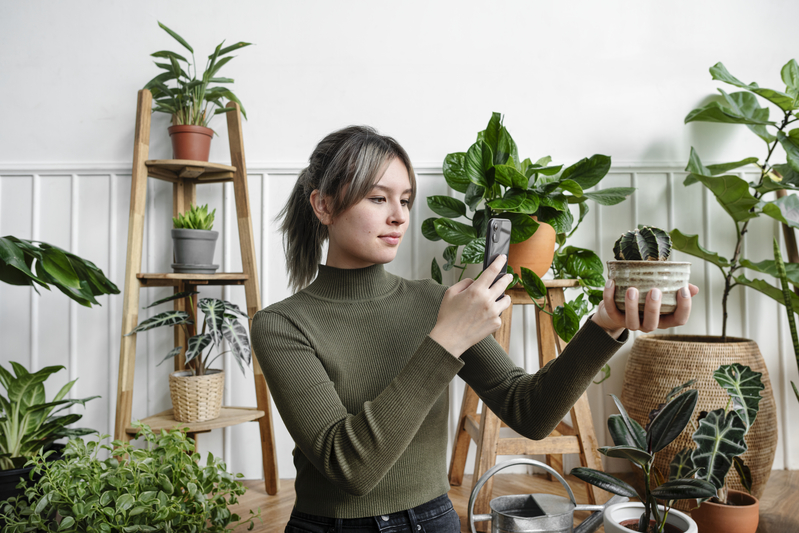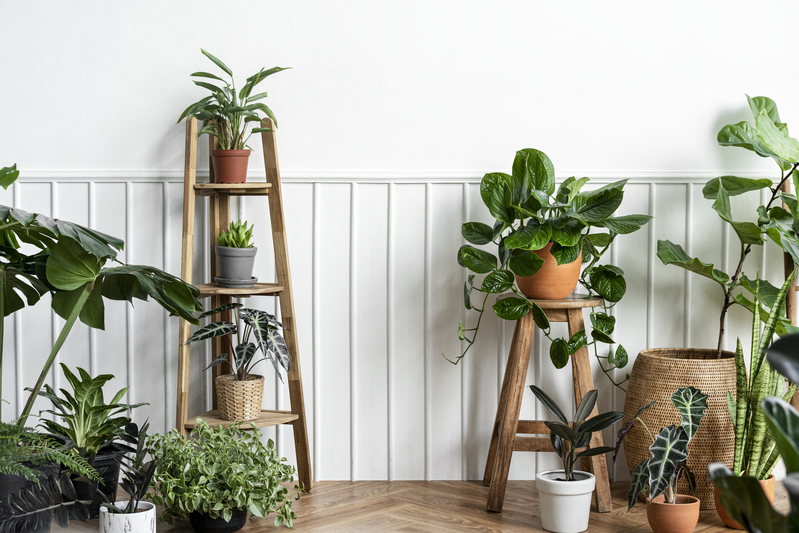Embracing the world of indoor houseplants is like inviting nature’s beauty into your living space. Whether you have a green thumb or are just starting your journey as a plant parent, this beginner’s guide will equip you with the essentials to cultivate a thriving indoor garden that breathes life into your home.
If you’re new to plant parenting, here are some tips to help you get started:
- Have patience. Your new plant won’t be lush and full overnight.
- Choose the right plant for your space. Consider the amount of light and humidity in your home.
- Water your plants properly. Overwatering and underwatering can both be harmful to your plants. Research the specific watering needs of your plant.
- Provide the right amount of light. Different plants have different light requirements. Some need direct sunlight, while others prefer indirect light.
- Use the suitable soil. Make sure your plant is potted in appropriate soil for its needs.
- Fertilize your plants. Most plants benefit from regular fertilization.
- Monitor your plants for pests and diseases. Catching problems early can help prevent them from spreading.
- Learn from others. Many resources are available to help you learn about plant care, including books, online courses, and YouTube videos.
You can become a confident and successful plant parent by following these tips.
Why Choose Indoor Houseplants?
Indoor houseplants offer more than just aesthetic appeal; they also contribute to improved air quality and a sense of tranquility. These green companions can help purify the air by absorbing pollutants and releasing oxygen, creating a healthier living environment.
Selecting the Right Plants
Low-Maintenance Greenery
As a beginner, opt for low-maintenance indoor houseplants that forgive occasional neglect. Some great options include the Snake Plant, Pothos, Spider Plant, and Peace Lily. Research each plant’s care requirements before making a choice to ensure it aligns with your lifestyle and the conditions of your home.
Understanding Light Requirements
Light is a crucial factor in plant care. Different plants have varying light preferences: low, bright, indirect, or direct sunlight. Place your plants accordingly—close to windows for those who love sunlight and in shadier corners for those who prefer lower light levels.
Choosing the Right Containers and Soil
Proper Container Selection
Select containers with drainage holes to prevent overwatering. Well-draining potting mixtures designed for indoor houseplants promote healthy root growth. Remember that the right container and soil can contribute to indoor plants’ overall health and growth.
Watering Wisely
Avoid Overwatering
Overwatering is a common mistake among new plant parents. Allow the top inch or two of soil to dry before watering again. Insert your finger into the soil to gauge moisture levels—plants prefer slightly moist soil, not soaked conditions.
Consistency Matters
Create a watering schedule based on your plant’s needs and the surrounding environment. Factors like humidity and temperature can influence how often your plants require water. Be consistent, and observe your plants to adjust your routine as needed.
Providing Adequate Humidity
Humidity-Loving Plants
Certain indoor houseplants thrive in higher humidity levels. Consider using a humidity tray, grouping plants together, or occasionally misting them to accommodate them. This mimics their natural habitat and ensures optimal growth.
Dealing with Common Issues
Pest Prevention
Keep a close watch for common pests like aphids and spider mites. Regularly inspect your houseplants and treat any infestations promptly. Isolating new plants before introducing them to your collection can help prevent the spread of pests.
Troubleshooting Yellow Leaves
Yellow leaves indicate overwatering, underwatering, nutrient deficiencies, or inadequate light. Learn to identify the cause and adjust your care routine accordingly to ensure the health of your plants.
Conclusion
Embarking on your journey as a plant parent can be incredibly rewarding. With the right knowledge and care, you’ll soon witness your indoor garden flourish, bringing a touch of nature’s beauty and serenity into your home. Remember to research each plant’s specific needs, listen to your plants’ cues, and enjoy nurturing these living companions.
FAQ

- What is the first thing you do when you buy an indoor plant? When you buy an indoor plant, you must first inspect it thoroughly for any signs of damage, pests, or diseases. Then, choose an appropriate spot in your home based on the plant’s light requirements and acclimate it gradually if needed.
- What is the easiest indoor plant to keep? The Snake Plant (Sansevieria) is often considered one of the easiest indoor plants to care for. It can tolerate low light and infrequent watering, making it an excellent choice for beginners.
- How do I become good at indoor houseplants? Becoming skilled at caring for indoor plants requires patience, observation, and learning. Research each plant’s specific care needs, understand your home’s conditions, and adapt your care routine accordingly. Practice over time will help you develop a green thumb.
- How often should you water indoor houseplants? The frequency of watering indoor plants varies based on factors such as the plant type, size, the pot’s material, and the environmental conditions. Instead of a fixed schedule, it’s best to water when the top inch or two of the soil feels dry. Constantly adjust your watering routine based on each plant’s individual requirements.
